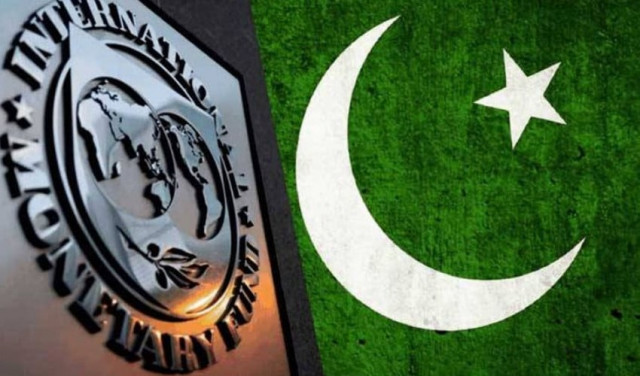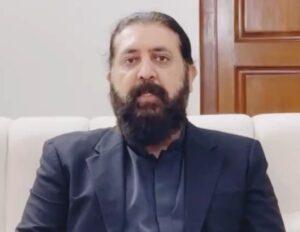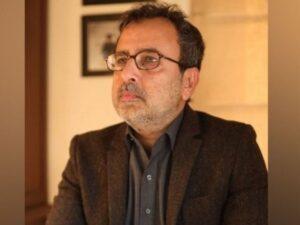Islamabad:
The International Monetary Fund (IMF) projected Pakistan’s economic growth rate on Tuesday to 3.6% for the current financial year, below the government’s official target of 4.2%. The projection was published in the latest report on the global economic perspectives of the IMF which maintained the growth forecasts of unchanged Pakistan.
The government had set a higher growth objective according to the expected recovery of agricultural and industrial sectors. However, the World Bank recently estimated that poverty in Pakistan affects almost 45% of the population. Official data on poverty and unemployment are currently unavailable, although Pakistan Bureau of Statistics (PBS) is updated relevant surveys. Due to obsolete data, the provisional GDP growth rate of 2.7% for the 201024-25 financial year was challenged by independent economists. The PBS plans to publish the results of the last census of agriculture next month, which could respond to some of these requests.
On the same day, the federal government also informed foreign diplomats on recent economic developments and asked for support to increase foreign direct investments (FDI), which remains weak. Diplomats have raised concerns about the increase in debt costs, high dependence on expensive commercial loans, tax relief measures and durability of the electricity division to reduce circular debt to 1.25 Billion of fresh domestic loans.
Finance Minister Bilal Azhar Kayani and the Minister of Power Sardar Awais Ahmad Khan Leghari led the briefing for diplomats from the United States, the United Kingdom, the EU, Italy, Germany, Canada, Australia, Switzerland, Japan, the Netherlands and Saudi Arabia. According to a press release from the Ministry of Finance, officials described tax and energy sector reforms. Kayani said the macroeconomic strategy in Pakistan had stabilized to sustained reform. He noted that GDP growth was 2.7% during the 2010-25 fiscal year and that per capita income increased by 10% to $ 1,824. However, this was based on ancient and relatively low population estimates.
The Ministry of Finance called for a primary surplus of 3.1% in GDP, the highest in 20 years, although it did not clarify in the press note if it was for the full year or only the first 11 months.
Inflation fell to 4.5%, a nine -year -old hollow, while the central bank policy rate was reduced from 22%to 11%. The debt / GDP ratio would also have dropped to 69%, indicating an improvement in budget management.
Diplomats asked how the government planned to reduce the high cost of external debt. Officials said the strategy had already been finalized with the IMF and the World Bank. The Ministry of Finance said that the external sector has shown resilience, recording a current account surplus of $ 2.1 billion, the first in 14 years and the highest in 22 years. This was supported by strong funds, higher exports, an increase in IED and stable foreign reserves of more than $ 14.5 billion.
Officials said this performance had been obtained without strong dependence on foreign loans. However, the central bank bought at least $ 7.3 billion on the local market between July and April, which maintained the artificially low rupee. This sum has exceeded the total size of three years of the IMF rescue package.
Diplomats have also been informed that two credit rating agencies had recently given positive criticism in Pakistan, and Moody’s should soon modernize the country. S&P improved Pakistan to “B negative” last week, advising new political and security stability for continuous progress.
In the energy sector, Leghari told diplomats that significant milestones had been reached, although the questions have remained on their long -term sustainability. He said the circular debt, now around 2.4 rummage of rupees, was approached as part of a plan agreed with the IMF.
The government has obtained RS1.25 Billion of commercial loans to reimburse a large part of this debt. The reimbursement will be funded by an surcharge at 3.24 RS per unit of electricity, ultimately supported by consumers. Diplomats wondered if this approach was sustainable. Leghari recognized structural problems such as high prices and ineffective prices, which had made electricity unaffordable for households and industry. These problems had also created budgetary pressures.
To remedy this, the government has undertaken general reforms focused on rationalization of prices, budgetary responsibility and operational improvement. Leghari said progress had been made to stabilize the circular debt during the 20125 fiscal year.
He also underlined the need to modernize energy planning to take into account seasonal demand changes, gaps in the regional offer and the growing role of distributed production.
The performance of the distribution company was another key objective. Leghari said that infrastructure improvements and reinforced governance were underway to reduce losses, the reforms implemented to ensure regional equity and institutional coordination.
He called on foreign governments and global investors to invest in the energy sector, citing $ 2 to 3 billion in potential in the modernization of the network, renewable energies, distribution efficiency and energy services. He also noted that the government aims to privatize electricity distribution companies, three companies being restructured for privatization in early 2026.
President FBR, Rashid Langrial, informed diplomats on the FBR transformation plan, built on three pillars: people, processes and technology. He said the real tax collection increased by 46% due to the improvement of compliance and application.
He also said that the tax ratio / GDP had increased to 10.24% during the 2010 financial year, against 8.8% during the 201024 fiscal year.
However, Pakistan has always missed its IMF income target of 0.3% of GDP, despite high -level record taxes last year.




